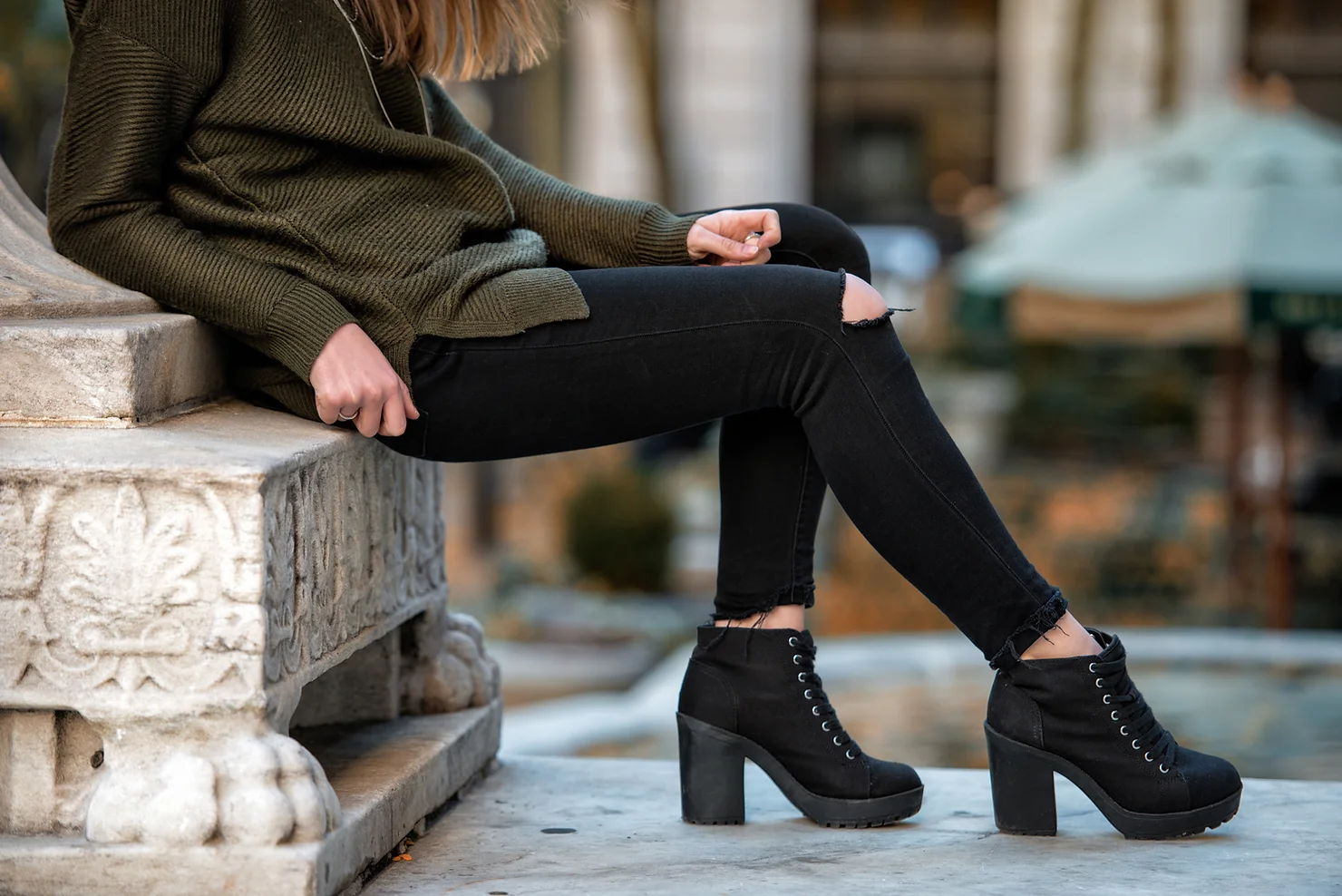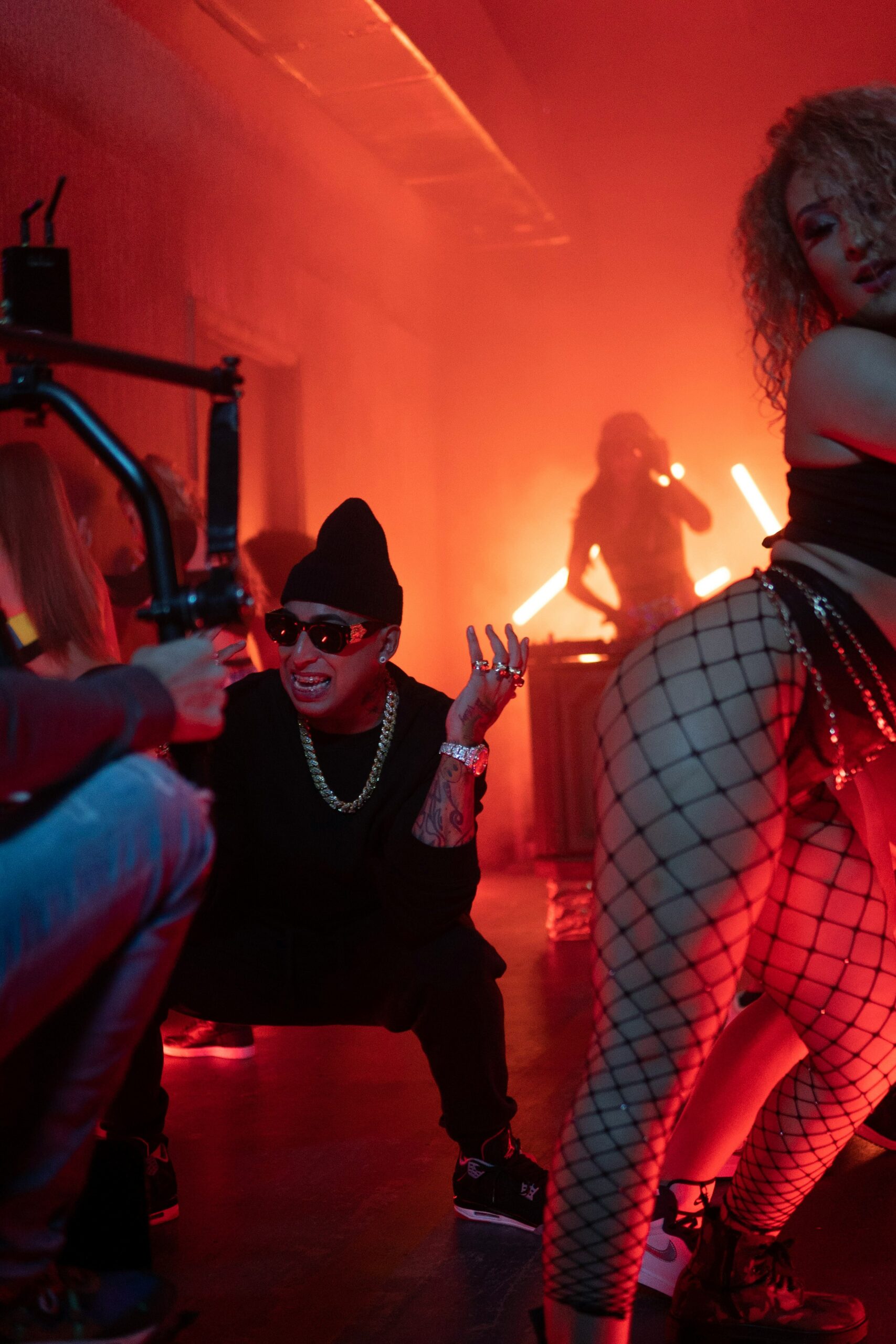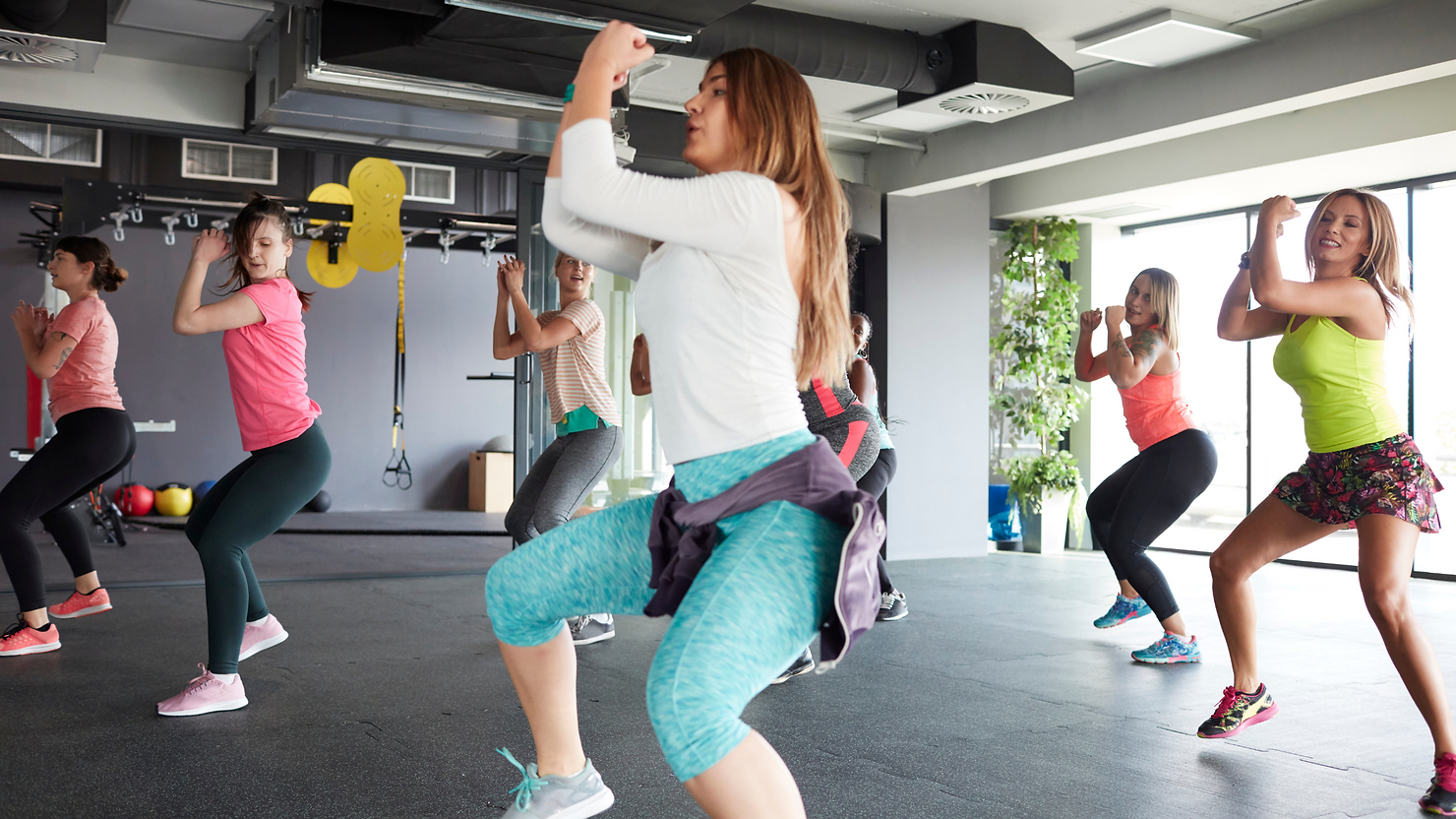Dancing in Heels is an exciting and stimulating form of modern, free-style dance that remains popular today due to its versatility and wide range of possible applications. This guide aims to provide both beginner and experienced dancers with a comprehensive overview of this dynamic form by introducing them to the fundamentals, structure, critical strategies for success, benefits it can offer everyone from performers to instructors, and considerations one needs to keep in mind while dancing in heels.
Whether you are a seasoned dancer ready to take your routine up a notch or brand new looking for extra flair on stage, this article will provide all the information you need to dive into this style confidently!
What is Dancing In Heels?
Heels Dance is a high-energy, female-centred form of dance where performers wear heels while they dance. This dance style developed from jazz, lyrical, and hip-hop elements, all of which involve powerful yet graceful moves executed with poise.
The heels provide an extra level of difficulty and interest, creating stunning visuals and intricate movements. Also, heels give the dancers more support and stability, enabling them to take it to the next level by adding jumps and higher kicks into the mix. Dancing in Heels is an art form for empowerment, developing strong dance techniques and confidence and self-expression for its practitioners.
How to get started
Dance in Heels is a style that allows both beginner and experienced dancers to explore the art form while wearing heels. It is an easy way to learn the fundamentals of dance with the added challenge of adding height. To start with Dance in Heels, you only need a combination of dance-ready shoes, such as heeled boots or pumps, and a willingness to learn.
Practising in front of a mirror or joining a class can help you become familiar with your moves and also allow you to observe your progress as you advance your skills. Stretching before each dance session can also help prevent injury and keep your muscles healthy. With dedication and practice, anyone can experience the joys of dancing in heels!
Who is Dance in heels for?
When you think of heels dancing, who do you imagine? Maybe a runway model strutting her stuff down the catwalk or a cabaret performer working their craft in a smoky, seedy club. But believe it or not, Dance in Heels isn’t just for professional performers but certainly not only for women.
It has become an incredible form of expression that many are now attending dance classes to learn how to master artistry, regardless of gender identity. So grab your favourite pair of shoes! Get ready to discover if heel dancing could be something you should pursue when looking for an empowering outlet! It is for…
1. Anyone Who Wants to Improve Their Posture
One of the main benefits of taking a Dance in Heels class is that it can help improve your posture. High heels force you to stand up straighter, which can, in turn, help to improve your posture even when you’re not wearing heels. If you struggle with slouching or poor posture, taking a heels dance class can be a great way to help improve your posture over time.
2. Anyone Who Wants to Improve Their Balance
Another benefit of taking a heels dance class is that it can help improve your balance. Balancing on your toes while wearing high heels is not easy, so practising this skill in a heels dance class can help you improve your overall balance. This can be especially beneficial if you have trouble with the balance due to an injury or medical condition.
3. Anyone Who Wants to Improve Their Flexibility
If you want to improve your flexibility, taking a heels dance class can also be helpful. Stretching and moving in ways you wouldn’t usually be able to while wearing high heels can help improve your flexibility over time. This can benefit those who want to increase their range of motion or want to prevent injuries.
4. People Looking to Have Fun
Of course, one of the best reasons to take a Dance in Heels class is simply because it’s fun! If you enjoy dancing and want to try something new, taking a heels dance class can be a great way to have fun and get some exercise at the same time. Whether you take a class alone or with friends, you’ll have a good time learning to dance in high heels.
What do you need to Dance in Heels?
Are you interested in learning how to Dance in Heels? It is all the rage right now, with celebrities like Beyonce and Ariana Grande using it in their music videos. The great thing about heel dance is that anyone can do it, regardless of your skill level or physical ability. All you need is good music, comfortable heels, and the willingness to have fun! Here are some things you need to know about Heel dancing so you can be ready to start having a blast with this new dance genre!
1. A good pair of Heels
A good pair of shoes are the first and most important thing for Dancing in Heels. You want a shoe that is comfortable, has good support, and is the right size. It is also essential to find a shoe with the right heel height for you. If you are just starting out, it is best to find a shoe with a lower heel so you can get used to dancing in heels. This video from Steezy Studios does a great job explaining how to find the right pair.
It is essential to choose the heel style that works best for you. Comfort should always be a significant factor when deciding which dance style to focus on; often, certain dance styles may not work with your body makeup or require dance shoes and heeled styles that can cause comfort issues.
Additionally, consider your skill level and experience in dancing—no matter the heel model, it’s essential to be mindful of how fast or slow you would like to progress in dance moves. With all these different factors in mind, as well as making sure to stay hydrated and warm up beforehand, any type of dance in heels will feel enjoyable for hours!
2. The right outfit
The second thing you need for Dancing in Heels is the right outfit. You want an outfit that is comfortable, flattering, and easy to move in. A skirt or dress is usually the best choice, but pants can also work. Ensure that your outfit allows you to move freely and doesn’t restrict your movement.
3. Dance experience
While having prior dance experience is unnecessary, it can certainly help. If you have experience with other types of dancing, such as ballet or tap, you will likely find it easier to learn how to dance in heels. Even if you don’t have formal dance training, don’t worry – with some practice, anyone can learn how to Dance in Heels!
4. A positive attitude
Another important thing you need for dancing in heels is a positive attitude. Learning how to heels dance can be challenging sometimes, but staying positive and trying is essential. Remember that everyone starts as a beginner and makes mistakes – even the most experienced dancers!
5. Patience
Last but not least, learning how to dance in heels requires patience. It takes time and practice to master the steps and feel confident dancing in heels. So be patient with yourself, and don’t get discouraged if you don’t get it perfect the first time. With a little bit of time and effort, you will be able to learn how to dance in heels like a pro!
The Benefits of Dancing In Heels
Are you looking for a fun and unique way to stay healthy and active? Then look no further than Dance in Heels, an innovative form of fitness gaining popularity. Combining modern dancing styles with high-heeled shoes offers physical and mental benefits to participants seeking an enjoyable experience while also receiving health benefits.
There are plenty of advantages to participating in heels, from increased coordination and balance to improved posture and mood. Let’s explore some of these rewards in more detail.
1. Improve Posture
This dance style can help improve your posture. When you wear heels, you are forced to stand up straighter and taller, which can help strengthen your back muscles and improve your overall posture.
2. Increase Flexibility
Dancing in Heels can also help increase flexibility. This is because when you wear heels, you constantly stretch and move your feet and ankles in new ways. This can help to increase the range of motion in your joints and make your muscles more flexible.
3. Strengthen Muscles
Dancing in Heels can also help to strengthen the muscles in your legs and feet. This is because when you wear heels, you constantly engage and use these muscles. This can help to tone and sculpt your legs and give you stronger, more toned muscles.
4. Boost Confidence
It can also help boost confidence. This is because when you wear heels, you are forced to stand up straighter and taller. This can make you feel more confident and assertive, which can translate into other areas of your life.
The different types of heels for dancing in heels
Dance in Heels is a contemporary dance that combines elements of traditional jazz technique and other popular styles. It’s usually performed to upbeat music, allowing dancers to prove their creativity and skill by performing at a high energy level.
When executing complex moves like turns, leaps, kicks, slides, and the dazzling array of arm movements heel dancing requires, choosing the right shoe can make all the difference in comfort and performance. Here, we’ll discuss all you need to know about types of heels for Dancing in Heels, so keep reading as we discuss each style!
1. Standard Heels
Standard heels are the most common type of heel worn by dancers. They are typically 2-3 inches tall and have a closed toe. Standard heels are available in various colours and styles to suit every dancer’s needs.

2. Latin Heels
Latin heels are designed explicitly for Latin dances such as the cha-cha, samba, and rumba. They are typically 2-3 inches tall and have an open toe. Latin heels are available in various colours and styles to suit every dancer’s needs.
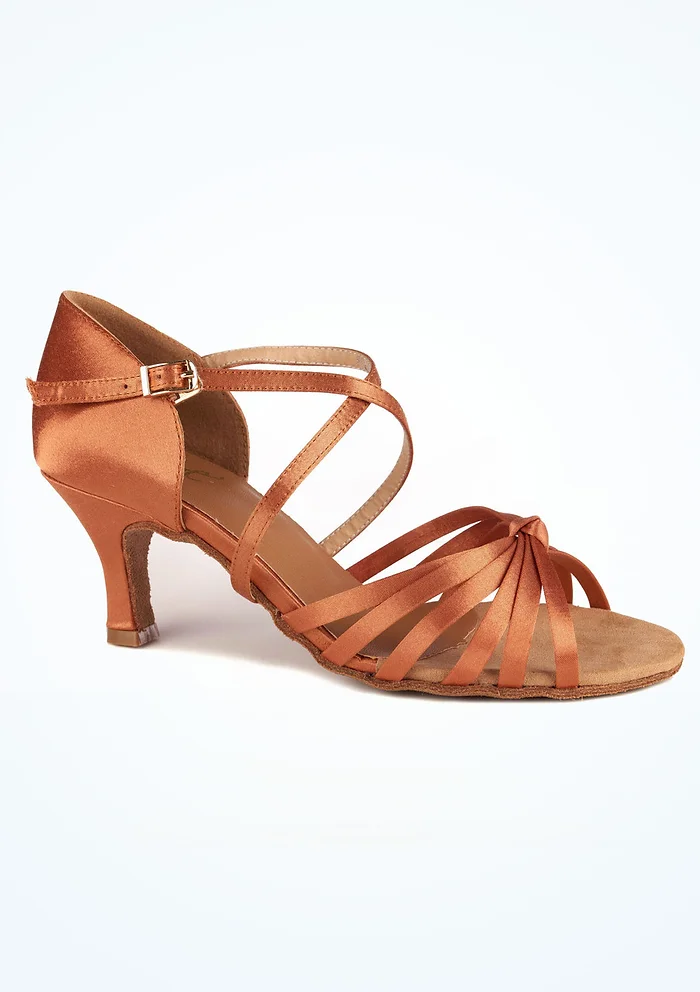
3. Practice Heels
Practice heels are a type of heel specifically designed for practice or rehearsal. They are typically 1-2 inches tall and have a closed toe. Practice heels are available in various colours and styles to suit every dancer’s needs.
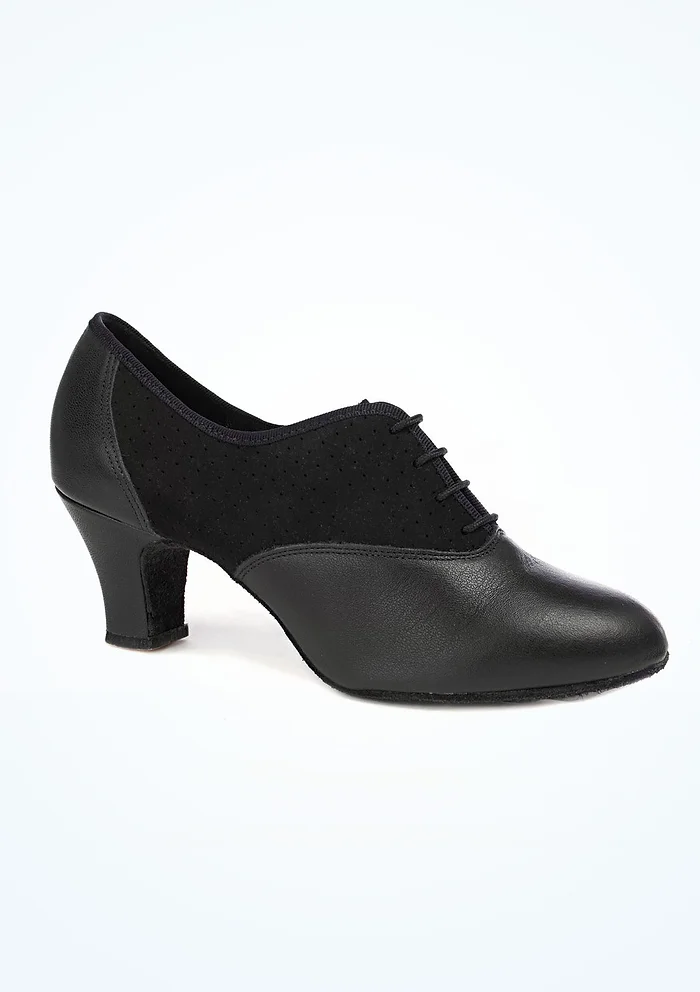
4. Character Heels
Character heels are designed explicitly for character dances such as the tango, foxtrot, and waltz. They are typically 2-3 inches tall and have a closed toe. Character heels are available in various colours and styles to suit every dancer’s needs.

5. Show Heels
Show heels are a type of heel specifically designed for performances or competitions. They are typically 2-4 inches tall and have an open toe. Show heels are available in various colours and styles to suit every dancer’s needs.
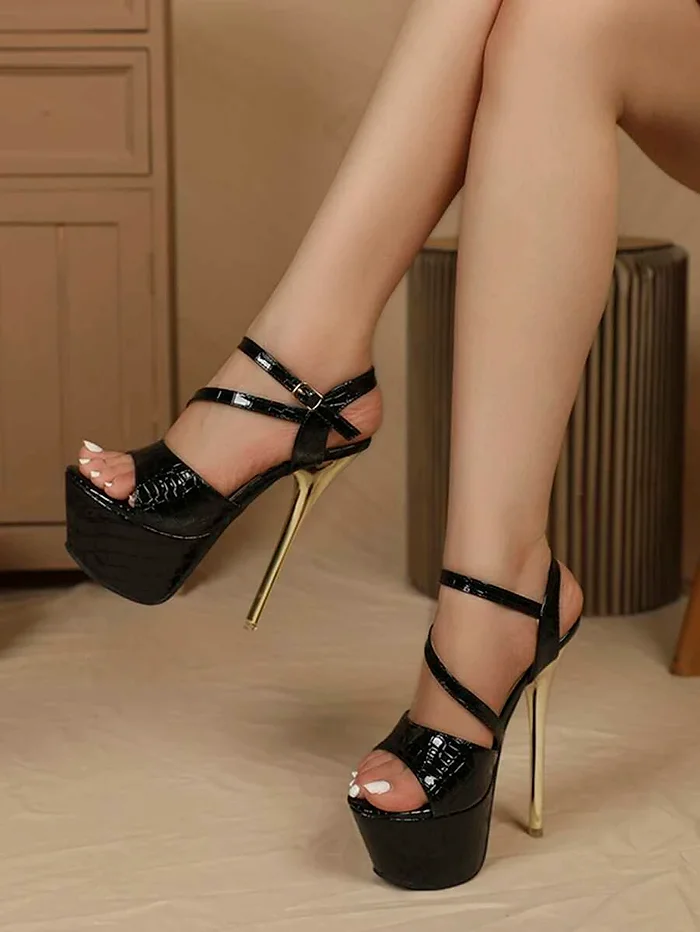
6. Dance Sneakers
Dance sneakers are a type of shoe specifically designed for dancing. They usually have a leather or canvas upper, EVA sole, and laces or Velcro for closure. Dance sneakers come in low-, medium-, and high-tops and a slip-on.
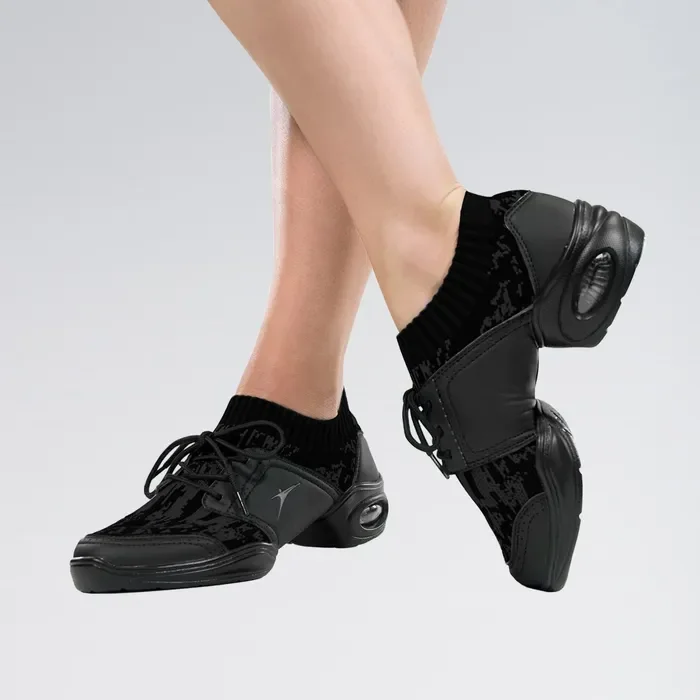
Tips for beginners
Learning to dance in heels as a beginner may seem daunting, but it doesn’t have to be! The trick is to practice the dance steps you’re learning gently until you get comfortable moving around in your heels. It’s important not to hit the dance floor too aggressively – dance moves like jumps and turns can be more easily pulled off when you are practised and familiar with wearing them in the first place. Ensure your dance shoes fit well so they don’t rub or pinch – this will help prevent any injuries as you keep practising your dance moves. With some patience, practice, and dedication, mastering dance in heels will become just another fun step on your journey of being a dance enthusiast!
Warm up before a dance-in-heels class
Warming up is a critical part of dance in heels class, significantly helping increase flexibility and protect against joint injuries.
Although it might seem unnecessary before starting class, beginners should start with proper warm-ups each time they dance in heels as it slowly builds their strength and familiarity with the dance moves. Warming up could be as simple as marching lightly on the spot, arm circles, or dynamic stretching like lunges and squats.
Additionally, dancers should consider doing specific muscle-strengthening exercises that target areas like their feet, ankles, and hips, which can benefit their dance movements in class. After a few classes, dancers will get the hang of warming up correctly with the right exercises suitable for dancing in heels.
Where to find classes and instructors
Sheydance.com is a great place to find qualified, experienced instructors to help you reach your dance goals. We connect experienced instructors with people who love and are passionate about dance.

